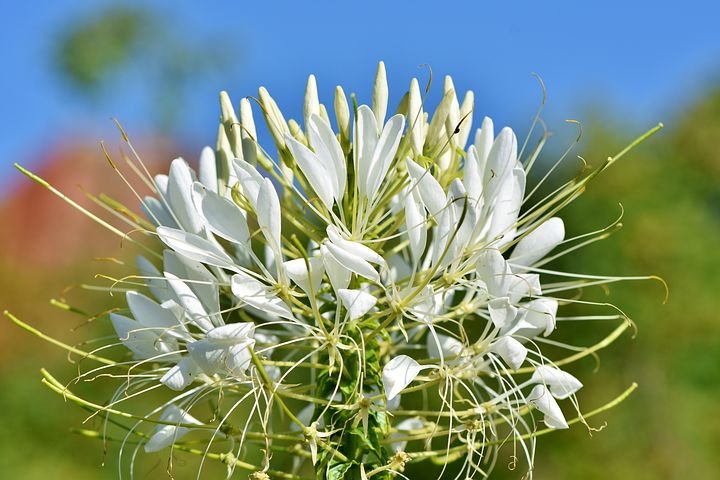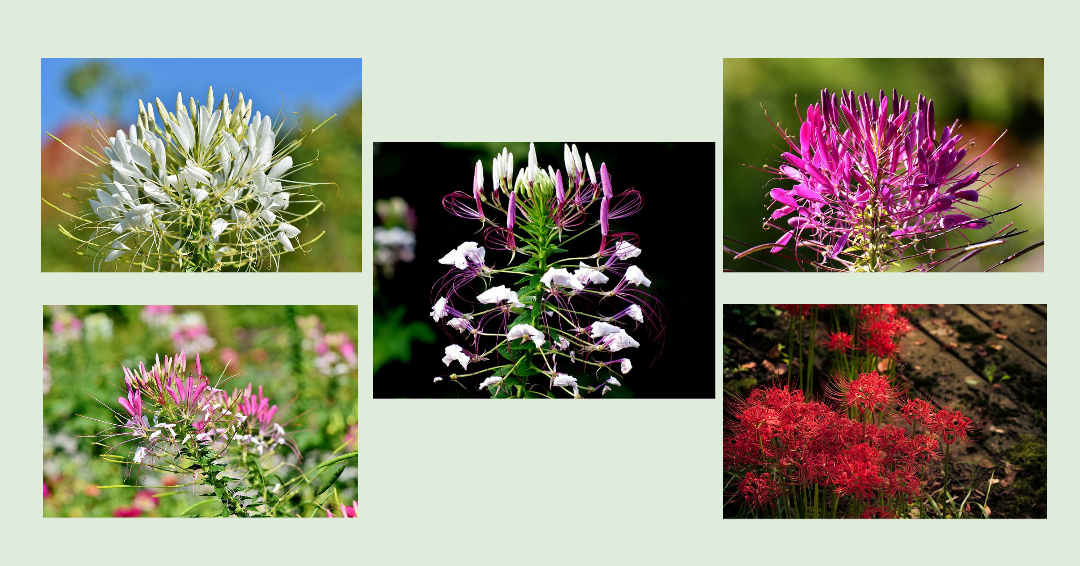Spider Plant (Chlorophytum Comosum) is an herbaceous tropical evergreen perennial enjoyed for its abundant foliage and ability to produce masses of plantlets. It is native to coastal areas in South Africa and has narrow, strap-shaped leaves arising from a central point.
The Spider Plant leaves are not flat, but they appear channeled or folded down the middle. It may also be solid green or variegated with lengthwise stripes of white or yellow.
The Spider Plant is known around the world by several other common names as well, including “airplane plant,” “ribbon plant,” and “spider ivy.” It is straightforward to grow indoors in medium to bright light throughout the year. It does well with average humidity and cooks to average temperature.

How To Grow Spider Plants From Seed
Growing Spider Plants from seed isn’t very common since Spider Plant is easy to propagate vegetatively by planting the offsets or dividing the roots. Seeds are one of the plant’s reproductive strategies and before you begin to grow Spider Plant from seed, bear in mind that if the specimen is a hybrid cultivar, the seedlings may look a bit different from their parent.
The flowers must be cross-pollinated to produce fertile seeds. You can do this by using a small artist’s brush or cotton swab to brush across the individual blooms once they appear. When the flowers fade, you will see small green seed pods in their place.
When it is dry, go ahead and pluck them from the plant and break them to collect the seeds inside. Sow the harvested seeds in a sterile potting medium and water them with a mister to avoid oversaturating the soil. Put the young plant in a pot and be aware of the young plants that may need more frequent watering than established specimens.
How To Grow Spider Plant From Offset
Sometimes, Spider Plant might have many offsets that don’t yet have their roots. In cases like this, you can grow Spider Plant from Offset in a few different ways.
1 . Snip it off and set it in a glass of water. This way, the offset base will be touching the water’s surface. Be careful not to submerge the entire offset.
2 . Root of the offset while still attached to the plant. Place a small pot together with potting soil under the offset and allow it to root while it is still attached to its parent.
In another way, you can snip it off from its stem and pot it up, letting it root in the soil on its own. Once your offsets are rooted well, care for them like a potted plant.
How To Grow Spider Plant From Division
Growing Spider Plant might be a great option when your plant is outgrowing its spit and you want to limit its size. Rather than letting it continue to grow, you can choose to divide it, creating two smaller specimens.
You will need to remove your plant from its pot and work a clump away from the main plant on both leaves and roots intact.
How To Care For Spider Plant
When properly taken care of, Spider Plant is well suited to hanging baskets where stems can hang down. Here are a few steps in which Spider Plant can be well taken care of.
1 . Light
Spider Plants can thrive best in conditions ranging from partial shade to full shade.
2 . Temperature
The Spider Plant appreciates conditions that are not too hot and not too cold. 65 and 75°F are the ideal temperature for this plant
3 . Water
Spider Plant stores water in its roots, which makes it more tolerant of inconsistent watering than other types of houseplants.
4. Humidity
The Spider Plant thrives best in an environment where the relative humidity is between 25 and 49 percent.
5. Fertilizer
While growing Spider Plant, you may limit your fertilizer applications to avoid unwanted side effects.
6. Toxic
The Spider Plant is non-toxic. It is always safe for humans, dogs, and cats.
Propagating Spider Plant
Spider Plant is one of the most common and well-known of all houseplants. It is popular with beginners and easy to grow, propagate, tolerate, and thrive in nearly all conditions.
1 . Once the small plantlets on a Spider Plant stem begin to develop roots at least an inch or two long, it is time to propagate. Use sharp pruners and cut them off the stem, carefully keeping the roots intact.
2 . Put them in a well-draining clay or plastic container filled with potting medium. Ensure the soil stays moist and not too soggy until they become established.
Types Of Spider Plant You Can Grow

There are several varieties of Spider Plant. They include;
1 . Chlorophytum Comosum “Variegatum.”
This type of variety has green foliage with a single off-white stripe down the center of each leaf.
2 . Chlorophytum Comosum “Bonnie.”
This variety produces yellow leaves and has loosely curled leaves with green margins and a cream center stripe.
Common Pests and Diseases
Spider Plant is generally healthy but is affected by a few common plant pests. They include aphids, whiteflies, and spider mites.
They are prone to tip burn caused by dry soil, low humidity, or a build-up of salt and chemicals found in some public tap water. They are also affected by mealybugs and scale.
Low humidity, arid soil, salt accumulation, and chemicals, particularly fluoride or chlorine in tap water, may cause brown leaf tips. Using distilled or rainwater will help to prevent tip browning. Overwatering or planting poorly drained soil can lead to root rot.
Frequently Asked Questions
1 . How Do You Take Care Of An Indoor Spider Plant?
- Place the plant in moderate light and temperature that’s well comfortable.
- Keep the soil moist. Water it once a week in spring and summer and In winter, allow the soil to dry a bit more between waterings.
- Ensure you fertilize every two to three weeks with a balanced houseplant fertilizer.
2. Does Spider Plant Need Direct Sunlight?
Spider Plant does well in part sun or full shade. Avoid direct sunlight because it will scorch the leaves. Use a grow light instead if you don’t have an ideal location for your Spider Plant.
3. Should I Cut The Brown Tips Off My Spider Plant?
Brown tips do not harm or damage the plants. However, you can choose to cut it if you want.
4. What Is Spider Plant Good For?
Spider Plant has proven therapeutic because they offer many benefits, such as reducing anxiety, anger, and depression. Spider Plants create a healthy living environment, getting rid of toxins and absorbing carbon dioxide. It is also used as a solvent in many industries in medical technology.
